 |
The Vintage Sports Car Club of Australia
|
|
||||||||
|
Even earlier than that, returning from Perth in 1978 from the MGCC National Rally in Julian Anderson’s TD, an excessive oil leak into the bell housing caused the abandonment of the return journey at Kalgoorlie. Providentially, at East Kal. they had a bogie flat wagon already on the goods platform so we were able to drive straight on. A couple of weeks later, Penrith station yard was tied up in knots while they shunted the wagon off an east bound freight and onto number three platform so a much worse for wear TD could be driven off! I must briefly recount that this interlude was preceded by the TD breaking its crankshaft at Eucla whilst I was driving on the trip west (tape recording fortuitously and inadvertently made). Despite a 24 hour engine overhaul in Perth Good Friday/Easter Saturday the leak which was a byproduct of the suspected fault which caused the break still existed. Phil’s successful return trip from Perth will be the subject of a full article in a later issue of the Vintage Car. His article in the current Pre War MG Newsletter certainly brought back memories! Susan and I caught up with John Phillips whilst on a “flying” visit to Canberra last week to take in the Nurses’ Exhibition at the War Memorial and the Silk Road Exhibition at the National Museum. John is semi laid up with a hopefully temporary back problem following a fall, but an enjoyable and reflective visit was made to Swinger Hill. We chatted about a photo of him driving a TA up the George McConnell Walker Straight at Silverdale, where he recorded the most impressive time of 44 seconds, and won his class. That was until Queen Paddie reviewed the results and elevated him from improved production sports to sports racing, denying him the award!
|
|
|||||||
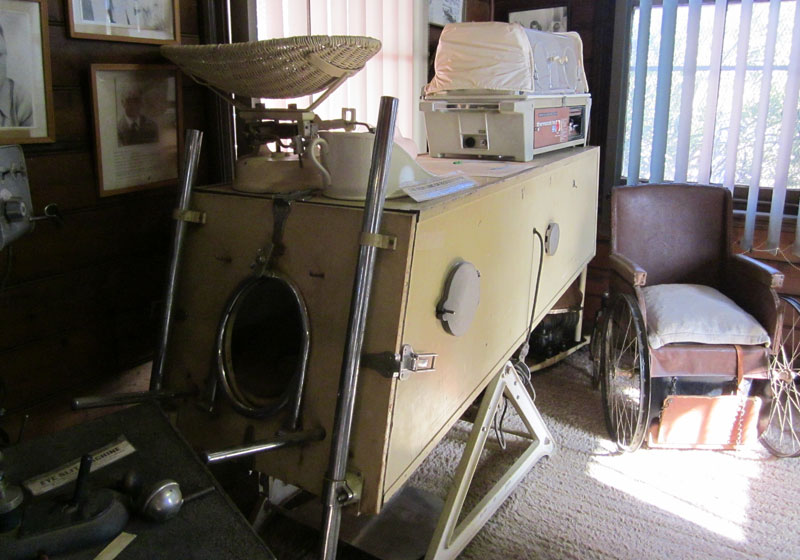 |
We chatted about the historic racing scene in the 60s, when my late father and Edward du Cros liaised with Geoff Sykes, John Stranger and Mary Packard of the AARC in running one off historic races at Warwick Farm. The VSCCA had a hand, through Edward (who had a regular column in the Vintage Car entitled “Vintage Racing Notes) in these events, and, as I have previously mentioned, Dad had the trophy which we now know as the Bentley Trophy commissioned as the VSCCA Trophy for an national vintage racing pointscore. This association also saw Dad and I attending Tasman series races at the Farm, good old days when the AARC offices were above the Bank of NSW Branch at Sussex and King Sts., Sydney. The HSRCA was then formed by other parties to run affairs, but at least it was John Lacky and our Club (again!) which ran that memorable first All Historic Meeting at Amaroo in 1976, and continued to do so until the MG Car Club took over. Only a small sprinkling of MGAs, Bs and modern midgets competed at the recent HSRCA winter meeting at Eastern Creek, but a good meeting was held. Regularity, a VSCCA invention and once the domain of less potent vintage cars being given a brisk day out, now has fields of much more recent vintage, with some drivers multiple entering Regularity and races. The only vintage car was a G P type Bugatti really being given a proper workout. One thing which is apparent is a dearth of trackside officials. Our son Lachlan was among a number of flaggies who had to work a point solo so that the meeting could proceed. I was allotted the point with the Clerk Of Course relay flags (Black, Mechanical Black, or meatball, and ad Sportsman’s, with attendant number board), so I had the able |
|||||||
|
assistance of a lady Babham driver whose car was feeling out of sorts on the Sunday. The 60 year old Australian Racing Drivers’ Club has completely changed its membership structure to accommodate more enthusiasts and officials at much more reasonable rates than before. It has set up an excellent members’ suite above the pit garages (called the ARDC Garage), so anyone interested in officialling and participating should go onto their website and at least see what is on offer! After officialling at Silverdale while still in high school, and flagging since 1970, I can assure anyone interested that this is without a doubt the most rewarding and least expensive way of participating in the sport. On another recent “flying” visit, Susan and I trained it to Broken Hill – out by Monday’s Explorer and back by the following evening’s Indian Pacific. The Tuesday was spent mainly on a visit to Silverton and the Royal Flying Doctor Base, indispersed by a quick visit to the Railway and Hospital Museum. In the latter part they have a Nuffield produced plywood iron lung, developed by the Adelaide brothers Ted and Don Both. Nuffield subsidized production (during the summer of 1937-38) to the extent of half a million pounds. The Morris factory produced them at 1/13th the cost of the American equivalent. Ted Both also invented the portable ECG machine, the humidicrib and countless other important medical devises. On the restoration front, our MGA is in the middle of an extensive makeover, while John Lackey’s “Gentleman’s Garage” at Springwood has charge of the M’s radiator, soldering up a leaky spout. Plenty of MGing coming up, See you on the road, Ian Heather |
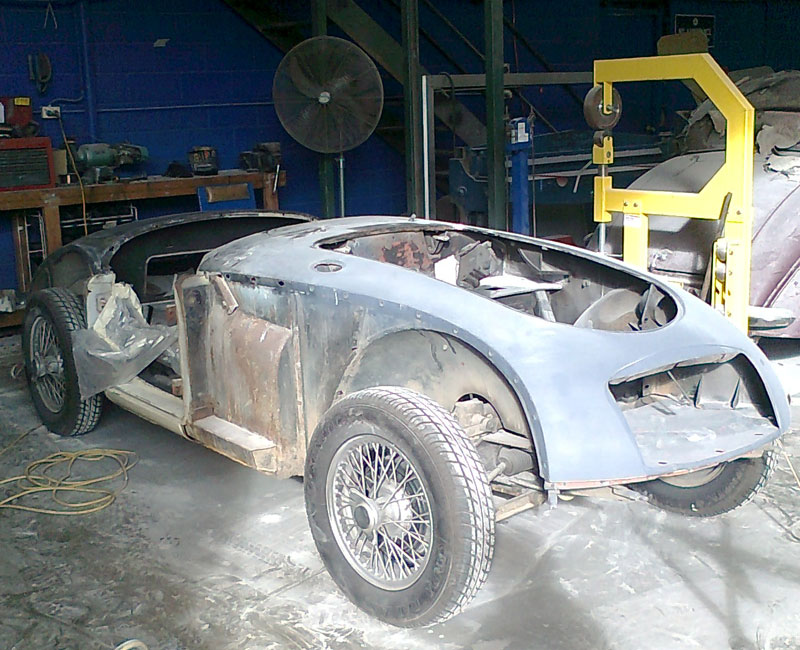 |
|||||||
| __________________________________________________________________________________ | ___________________________________________________________________________ | |||||||
| March April 2012 | ||||||||
|
Greetings! Here we are in autumn, having got in just two mornings in the surf in February. Five inches of rain were recorded in Heathcote last night (as I write, 8th March)! A bit of Nuffield activity is going on and planned, with the centenary of the production of the first Morris car. There is rally planned in Canberra next April (19th to 22nd) for appropriate vehicles, the contact being John Inshaw (bevjohn@primus.com.au, 0403.076.175). Two tours following directly after are also planned. This October long weekend I guess they’ll run the MG Y Time run in Canberra like they did two years ago. At least a repeat was projected, so I’ll keep you posted. I have attached a photo of the Nuffield plant at Victoria Park, Sydney, taken from the Nuffield Exports News Exchange of August, 1951, kindly passed on by Craig Robinson. The close proximity to the racecourse is obvious. This plant was developed out of all recognition until closed down in the 1970s to ostensibly to permit the building and import of Japanese cars.
|
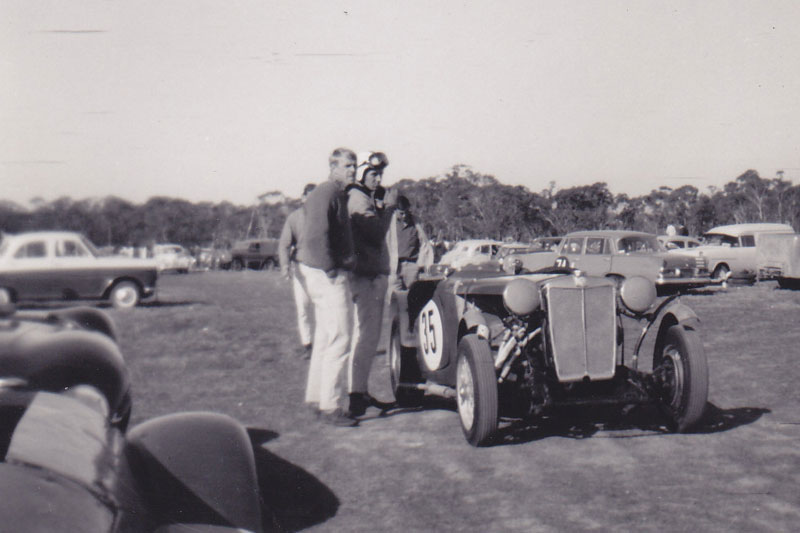 |
|||||||
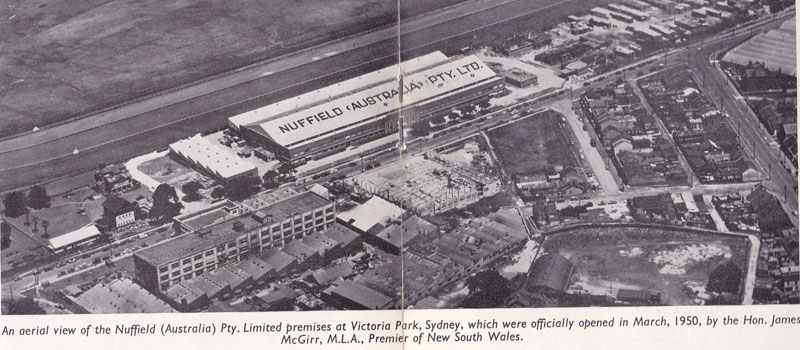 |
||||||||
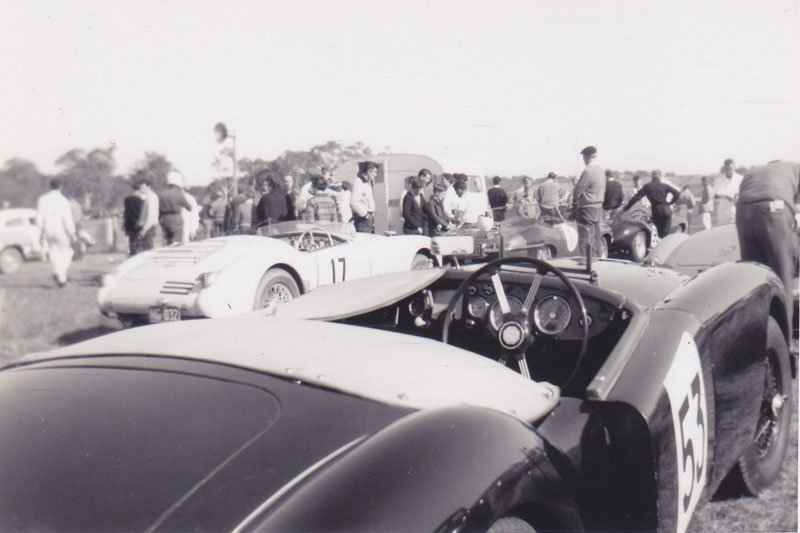 |
The story of the plant, a book entitled “Building Cars in Australia”, is scheduled to be released in April, and is said to have been made possible from a grant from the City of Sydney. We are advised to “watch for press releases”. A copy of Australian Classic Car (May 2010) which I came across the other day contains an item on Old Gold Rolling into Canberra, with a photos of the local doyen of the VSCCA, John Phillips, and Tim Shellshear and “Monster”.* At a recent meeting of the Cronulla RSL Club “Motoring Enthusiasts Group”, Terry Thompson spoke on various matters including why NSW has kept the current vehicle on concessional registration scheme going and also a bit behind the conversion of the RTA to the RMS (Royal Mail Steamer?), and a couple of projected schemes which have been thankfully canned and included one severely limiting the re-bodying (and in our case the rebuilding from basket cases) of cars. Ian Heather *Monster is a hybrid car built from a 1920s Crossley & Mercedes parts, Click Here
|
|||||||
| _____________________________________________________________________________________________________________________________ | ||||||||
| FEBRUARY 2012 | ||||||||
|
Greetings and Happy New Year! It was a busy festive season for us. Lachie’s brother in law and family came over from Canada so Susan and I “escaped” on a Christmas/New Year river cruise from Budapest to Amsterdam. The junket started with three nights in Prague and ended with three nights in Paris. Apart from the dreaded flight it was most excellent – no snow except half an hour in Budapest and a solitary snowflake in snow surrounded Salzburg on Christmas Day. Christmas lights, markets, mulled wine and no biting cold weather made a magic break. We are enjoyably medieval citied and cathedraled out! We settled into a pattern of dining with a slightly older couple from Bath – he is a retired Rolls Royce aero engine design engineer who, in earlier years, was part of a group of employees who “enthusiastically” owned Austin 7s and kept a chap in the works busy honing bores with a specially made tool! One highlight was a visit to the Audi Museum, Ingolstadt, a multi floored super rotunda with three vast floors and a basement at the factory. Susan opted to go on a walking tour of medieval Regensburg. |
||||||||
|
Delving through books etc. at the “ancestral home” I came across the May, 1980, “Vintage Car”. I thought I would share a few of the gems contained therein with you. First there were reflective articles on the passing of Ray Neely and Bob Shepherd. Ray of course conducted Nealys Newsagency at Wentworthville and built a lovely boat decked pointed tail body on his Rolls Royce Phantom 1. Bob Shepherd was a founder member of this club, designing its badge and sketching the original magazine front cover, part of which we still use. The amazing thing was that he never fully owned a car (having had “interests” in several), and, after 1950, never drove one, and at no time held a driver’s licence. His many superb drawings are legendary. |
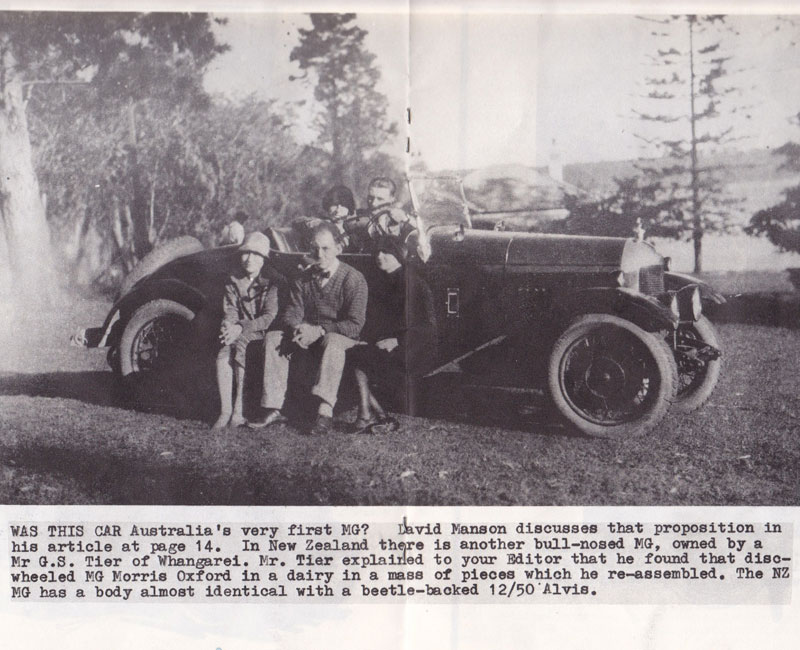 |
|||||||
| Also, in this pearl of an issue, a speculative article by David Manson on “Australia’s Very First MG”. A photo of this circa 1925 two seater (with a dicky?) appeared as the centre spread. it was supplied to David by a Stan Hill, who was Sales Manager for Willams Bros from 1921 to 1925. They imported Morris, Sunbeam and Alvis cars, and were very supportive of motor sport. They sold out to S. A. Cheney in 1925, and he concentrated on Morris only. The M. G. interest was, of course, rekindled by P. & R. Williams, sons of one of the Williams Bros. | ||||||||
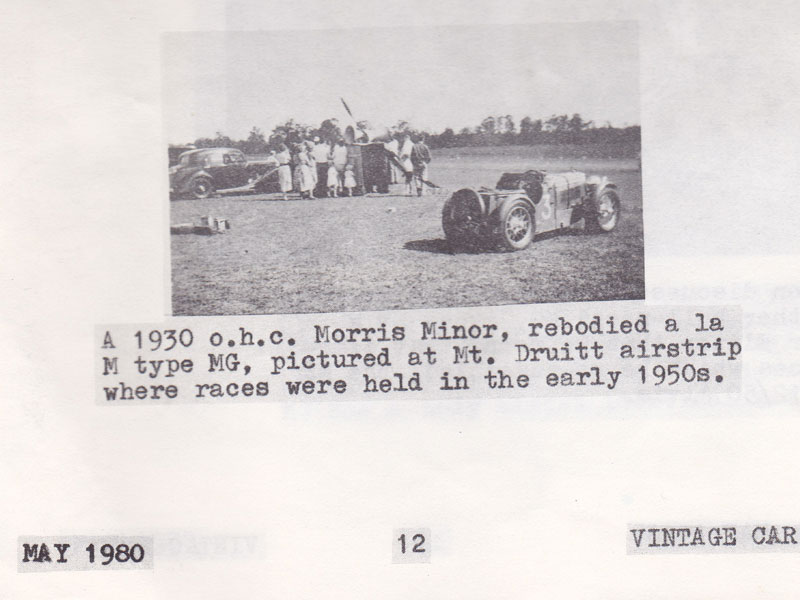 |
Of the car in question, only the wheels were said to be correct for the then current MG. And, of course, the trademark “steamer” air intakes on the scuttle. According to current sources, when MGs were imported as a chassis only, the windscreens, scuttle fitments and dashboards came with the chassis for incorporation on the local body. On page 12, a photo said to be of a 1930 ohc Morris Minor, rebodied as an M-type MG, at Mt. Druitt airstrip in the early 1950s. Close inspection shows the classic 1929 M-type outside front brake actuators and hub caps, so in fact this a more likely to be an M-type. Its body is reminiscent of my late father’s (M0582), but more likely another local J- type look alike. Not so long ago I shared with you the activities of Britain’s first motoring association, the initial activity of which was to post spies to warn motorists of speed traps, circa 1905. Now, thumbing through a book entitled “One For the Road”, a photo, circa 1930, of a uniformed South Australian Motor Association bicycle patrolman whose duty was to do the same thing, the prescribed signal being not to salute! Then, of course, they changed the law. |
|||||||
|
So there you go. See you on the road this year. As they have reopened the lower half of Mitchell’s Pass to motor traffic, the Blue Mountains Chapter may well have a breakky run incorporating all four of the navigable ascent/descents of the escarpment in this vicinity. The only road not navigable is, in fact, the old Cox’s road, circa 1804, which curiously went straight up the escarpment from the Nepean River, across the present Highway where Governor’s Drive comes out, and then up the hill to the R A A F Base. Cheers, Ian |
||||||||
|
DECEMBER, 2011 Greetings, Many thanks to the Club and Club members for their best wishes for my recent surgery, which was satisfactory and the recovery is progressing. Thanks especially to Allan Baker, Ray Beattie and Craig Robinson who assisted greatly in the reassembly of our TC during this period. As a result we had to go modern to the MG Pre War Register Rally but we weren’t Robinson Crusoe. This was the fourth (and possibly last) of the series and, unlike the previous three, the accommodation was at Lake Hume Resort. This is a large and rambling establishment and is was most pleasant to have one’s corn flakes listening to the throaty sounds of blown and unblown OHC 6s coming up a steepish hill from rooms below ours. Because of the location a touring assembly was required to the traditional Saturday morning gathering in the police paddock behind Beechworth Courthouse. We shared at Beechworth magic weather and a Celtic festival with a dozen pipe bands and Irish and Morris dancers. To be enjoyed from a Scottish butchery’s stall were haggis rolls and lamb pies. Yum! The usual gaggle of rarely seen pre war MGs were in attendance – too many to enumerate but I can mention that Julie Craig’s 14/28 bullnose was the earliest, then a solitary “M” and, with the notable exception of Q and R types, most of the other pre war types seemed to be represented. John Lackey had the TA “replica” with a matching pedal car autographed by Allan Tomlinson, while Stuart Schofield had his ex Gordon Stewart L, and TimShellshear and Margaret Edmond had the F. The afternoon was spent on a run back to the resort via a goldmining town named Eldorado, where a massive dredge still exists for all to see. Then an evening barbecue where wine specially labelled MG CECIL SAUCE (more vintage than you can handle) was on sale – also thin 375ml bottles of dark red liquid, the labels of which proclaimed that it was CECIL’S SUMP SYRUP “SPECIAL OLD DIPSTICK” LIMITING RELEASE PORT. On the Sunday we were off to Falls Creek for lunch under grey skies. On the upper reaches of the climb the road marking changed from white to bright yellow. Why on earth did we change at all? There were enough T types in attendance for an impressive photo shoot of almost every variant. All cars made the climb with ease except a modern Jaguar which got there in the end with fuel problems. Eerily the hills were full of dead Mountain Ash trees – there had been a bush fires and they do not regenerate. On the trip back we called into Bright where there was a hot rod rally in progress – outside nearly every house there was a group of residents in chairs with the odd table and more than the odd esky. Then it was a coffee and cake stop in Yakandandah and a quick look at the old migrant hostel at Bonegilla which has been largely preserved. In no time at all we were at the final dinner with the Schofields and John Lackey and Rob. Phillips. As only three of the six of us were partaking of the three bottles of wine on the table John wove his magic and the solitary white became a red. Susan and I scored a bottle of the limiting release port in the raffle. Fingers crossed they will put in on again in 2013, but by whom and where is the question. On the trip south we called in at the Worboys’ antique shop in Holbrook. Former VSCCA member Richard appeared from his motor house “up to his elbows in grease” and we were escorted out to see his restoration project – the Cannan Morris from the early 60s, space frame and two seat streamlined body, inboard rear brakes and all. Some nice photos were on the wall of the car in action at Oran Park in Singer Car Club days. The aluminium body is a bit sad but it’s on the way back! My eyes fell on a pile of John Medley’s book on John Snow, Classic Motor Racer. A sum certain in money was parted with and the book picked up on the Monday duly autographed by the author who resides locally to Holbrook. The book covers the Australian and European motor racing scene pre and post war in absolutely superlative fashion, with interesting insights into some of those irreplaceable characters now lost to us who formed the VSCCA. An interesting snippet in November’s Club Newsletter on Dudgeons. Takes one back to Edward Du Cros’ series of musings on the subject in the Vintage Car in the mid 60s – largely lost to the old memory except for one sketch and the fact that the lady in the musings was one Dimity Dishgold. Also, from Edward, in my defence, after a couple of articles by me on the then only recent closure of the Sydney tramway system, (written in connection with a couple of club rallies at the time to the fledgling tramway museum), received a derogatory comment from the then editors, an epic poem:- “I HOPE THAT I WILL NEVER RAM AN OBJECT SOLID AS A TRAM, AGAINST WHOSE MASSIVE METAL BREAST MY CRUMPLED VINTAGE CAR IS PRESSED”. Whilst thinking back, I am reminded that our Club is some 67 years old. When it was formed the newest cars on its UK based eligibility list were only 13 years old and largely in daily use. Ten years later the veterans hived off and formed their own club. Since then we have acquired concessional registration and the historic car movement has changed out of all recognition. Purpose built sports cars, albeit largely not hand built (but who, having been to Abingdon, would deny that its MGs were hand assembled to the end) have continued to be built since 1931. Since the Red Flag Act motoring has been an evolutionary thing and what was current thinking in 1944 is not so today. We can properly respect the original VSCCA and its members and policies but the recent passing of Don Wright brought home to me the fact his breed of motorist is, unfortunately, passing from our ranks, and we who have enjoyed the company of him and others of his era over the years must be thankful and, at the same time, accept that the Club, without them, must “sail on, O ship of state”, and continue to embrace members and cars who and which embody essentially the same spirit but necessarily manifest themselves in different ways. Otherwise many of these later cars will go same the way as what we once regarded as (proper) cars would have had it not been for the VSCCA’s creation. All the best for the Festive Season from Susan and myself. Ian Heather
|
||||||||
| __________________________________________________________________________________________________________ | ||||||||
|
October 2011 |
||||||||
|
Greetings, Having sharpened my quill with my trusty pen knife, and dipped it in my trusty inkwell, Ladies and Gentlemen, let me begin. I suppose this takes me back to the good old days of primary school when we had paper bags full of ink powder and the ink monitor had to, each morning, go to the wash shed and mix the class’s ink into the trusty ceramic bottles. One cringes when one sees how some biro schooled folk clutch their pens. There is a story of why biros were invented. Was it to do with aviators? Lately there have been a number of the traditional runs for VSCCA (and MG) folk. First was the Eastern Creek CMC bash, where our club amassed five or so cars in a group with others, as usual, sprinkled amongst other clubs. We all seemed to touch base at some stage or other. Our club was, like last year, in section D behind the grandstand, but so was the MG club and we mingled with them on our “parade” lap. I took fellow flaggy Ingo Weinberger from that club as a passenger in the M -type. It was interesting to see what they have been doing at the Creek to create a proper short circuit, joining turns 4 & 9. There is circulating a theory that they are after the F1 A G P when Melbourne’s contract ends in 2013. Not too far down the track – I was glancing recently at the Vintage Motor Club’s 50th Anniversary Rally sticker on the TC’s windscreen – seems only yesterday but it was in 2004, the weekend Makeby Diva infamously ran second in the Caulfield Cup. |
||||||||
|
Then it was off to King’s School for the All British Day. Always a top day where one chats and chats and chats. Thanks to John Holliday I now have number of NSW railway videos to while away my next operational recovery. Shows you can more easily fit boxes into a T type than and MGA! Many thanks, John. I caught up with Max Hamilton, from who I bought my “M” type 47 years ago. He drove his bug eyed Sprite down from Shipley, where he is living in and restoring a stone house. Our club had its two iris blue TCs and Craig’s red one. An interesting aside with our TC. Its firewall has lately been blessed with a reasonable match of its original light olive khaki paint (with the untouched toe board in an even lighter shade). Jeff Newey commented that prior to August, 1948, in the factory one chap painted a batch of firewalls, another a batch of rocker box covers and another the toe boards. The final shade of war surplus khaki paint depended on how much white, blue and orange tint was mixed with the khaki. I suspect that with ours the rocker box cover should be a slightly darker shade, with another shade of green again on the motor! However, we’ll live for the time being with what we have got. On seeing the finished product, Ray Beattie commented on how they appear to have used army surplus ammunition boxes for the tool and battery boxes! Before next issue we’ll (I hope) have been off to Albury and Beechworth with the Pre War MG Register and then it will be out with the holly and the ivy! Cheers, Ian |
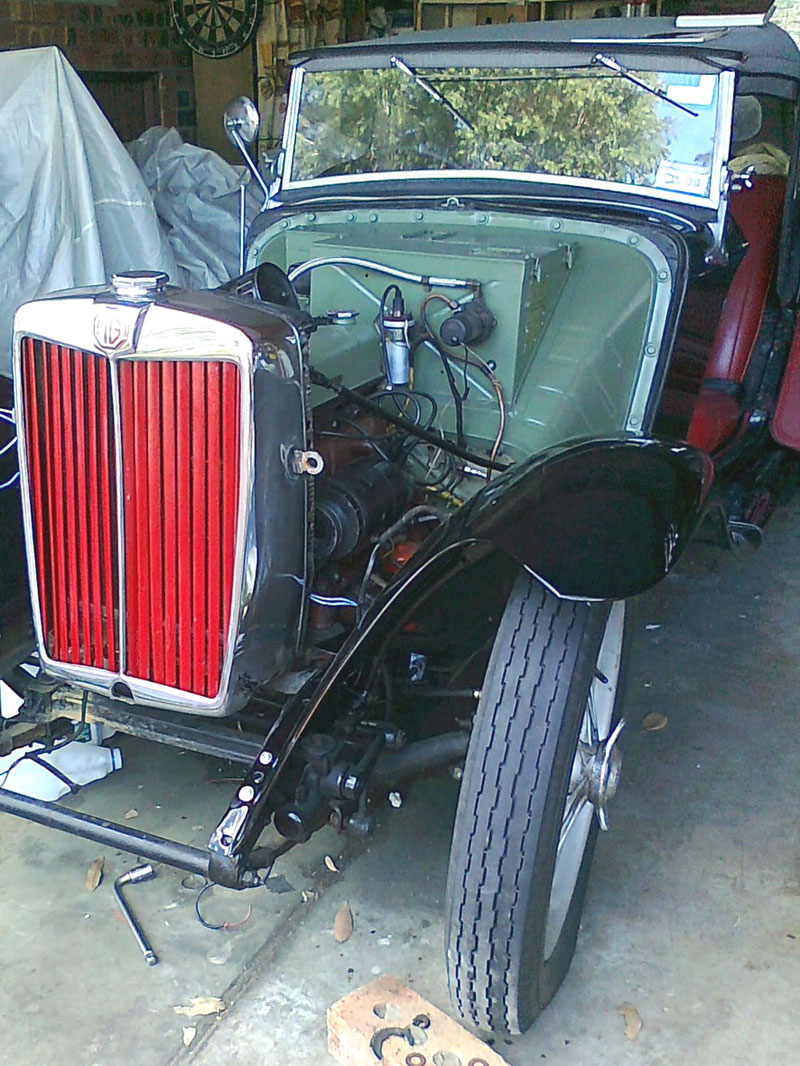 |
|||||||
|
AUGUST 2011 Greetings, A letter by me to the Editor of Afloat Magazine recently resulted in a reply and a bit of research into Browns Wharf, Wooloomooloo. The very first result of Googling resulted in a detailed account of Sydney’s “First Ever All Veteran Run”, 4/4/1954, which started at the wharf and ended at Cook Park, Doll’s point. There were 15 entrants including Jack Myers (1912 Argyll) and John Crouch (then the VSCC President, 1914 Humberette). The article states that the run was a VSCC event “with the object of the restoration and use of Victorian and Edwardian cars”, and that some veteran car owners were apparently somewhat disgruntled as they felt that VSCC runs and events were totally unsuitable for older and slower veterans. The latter statement a fairly well known fact, and it was around this time that Jack Myers is said to have famously suggested that the veteran VSCC members form their own club, which they did. The article included a photo of a Vauxhall 30/98 and a Hurlingham at the finish and mentioned that the 30/98’s owner, Ron Grant, was one month later the President of the Veteran and Edwardian Car Owner’s Club of Australia. A direct result of that of course was that the practice of using trade plates and one occasion permits to move as an alternative to full registration was formalized into the very first “Permit To Move An Unregistered Vehicle” scheme. Interestingly, one photo shows John Crouch and passenger wearing “illegal” false moustaches, while in the 1954 Redex Trial that July he was photographed sporting a real moustache but had “adopted a false bead”. I recently had a telephone call from Ken Palmer, a friend of whose had owned a D-Type MG but was confused as to its year of manufacture. This chap ( Peter Wargent) e-mailed me a photo of the car, which he had owned in England about 1963/4. He regrets having sold it when an impoverished student. The D-Type was the unlikely cobbling together of an M-Type motor in a C-type chassis with a three speed box and a close coupled four seat body. The prototype roadster had M-Type axles, and the body was a shortened F-Type, even down to the instrument board. The F, of course was a 1271cc six – same bore and stroke as the M – must have been virtually a pre cammy Minor Wolseley Hornet engine. The car was decidedly underpowered and one wonders why they made it at all, firstly as it had a production life of only 7 or so months for 208 roadsters, 37 (including Peter Wargent’s) salonettes, and five chassis for external coachbuilders, and also because the F production started at the same time (late 1931) and lasted until the end of 1932. Sources say that surviving Ds are exceedingly rare, most cars having been either scrapped or converted into C-Type specials. Peter Wargent’s photograph is the only one I have seen of a salonette, which wouldn’t be unusual 80 years later with only 37 having been built. At the June HSRCA Eastern Creek historics I took advantage of the late start on the Sunday due to pea soup fog to catch up with Percy Hunter exiting (shaking off?) the TC monoposto, and meeting racing TC owner Peter Lubrano. There was only one MGA (Richard Rose) and a scattering of MGBs and Midgets. Called into Nepean Classic Cars the other day to discuss stripping and painting our TC’s mudguards, bonnet tops and petrol tank. In bare metal the back guards are shown to have been heavily repaired at some stage and bottoms of the front guards are a trifle sad. More on this project at a later date. In attendance for sale was a late red MGA 1500 restored to the nth degree. Chrome wheels, new paint, mustardy leather seats and dash, radio and new carpet. Very nice, but as soon as you looked in the cockpit you noticed that the owner had not provided a flap in the carpet for the gearbox oil filler! Just to hand more news on the MG sedan now being built in Birmingham.Very nice car which is to revive the tradition of the name Magnette, but again totally without leather seats or woodgrain. That wraps this column up. Cheers, Ian |
||||||||
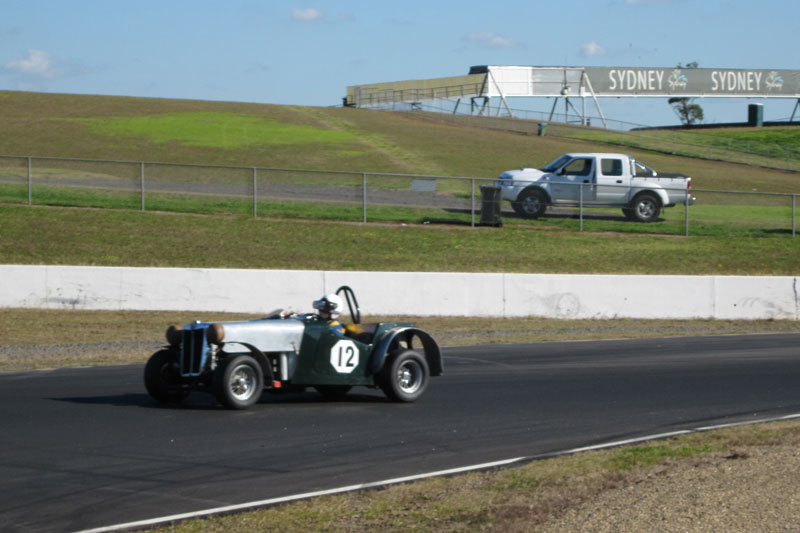 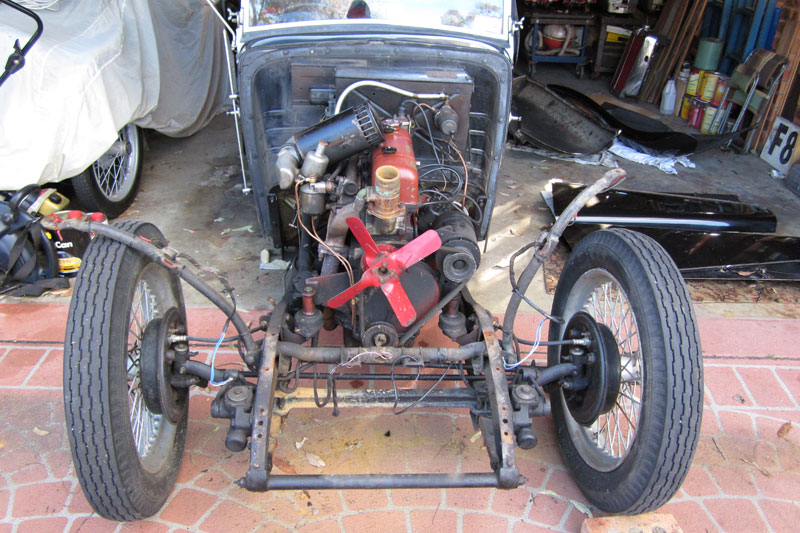 |
||||||||
|
POST SCRIPT TO AUGUST’S MG REGISTRAR’S REPORT. I have only just received in the mail the Pre-War MG Register’s newsletter. One item of sadness is the rapid decline into dementia of Allan Tomlinson, the memory of whose pre war AGP victory in his TA is perpetuated by John Lackey’s replica (and the presence of the actual trophy in the hands of Ed Farrar). The flurry of activity by John in creating this masterpiece and being able to call upon Allan for advice and having him appraise and ride in the finished article shows just how fortunate and opportune John was and how vulnerable we are. Sayings like “strike while the iron’s hot” ring true! This is akin to another item in the newsletter (from John Lackey and Graeme Steinfort) regarding one Charles Nelson Jackson who was said to have been encouraged by Lord Nuffield to establish MG in Australia. The vehicle with which he did this was a 1929 M-type. The item records a press report “by a Bowral spectator” of “Jackson’s driving in the 50 mile road race at Gerringong on Saturday”. My M-type was said to have been found derelict in dunes surrounding the 7 Mile Beach at Gerringong where they did the sand racing. 20 odd years ago a fellow Cowley owner from Lapstone by the name of Kevin Harper told me that his brother remembered an early MG suffering a misfortune during a race on the beach, ending up in the Crooked River and being dumped. Alas, I never followed this up with the brother. Now Kevin has passed on and the opportunity was lost. I will certainly follow up this report about Jackson and also ring Paul Hamilton from whose cousin Max I bought the derelict M in 1964 for further information. Ian
|
||||||||
| __________________________________________________________________________________________________________ | ||||||||
|
DECEMBER, 2010
|
||||||||
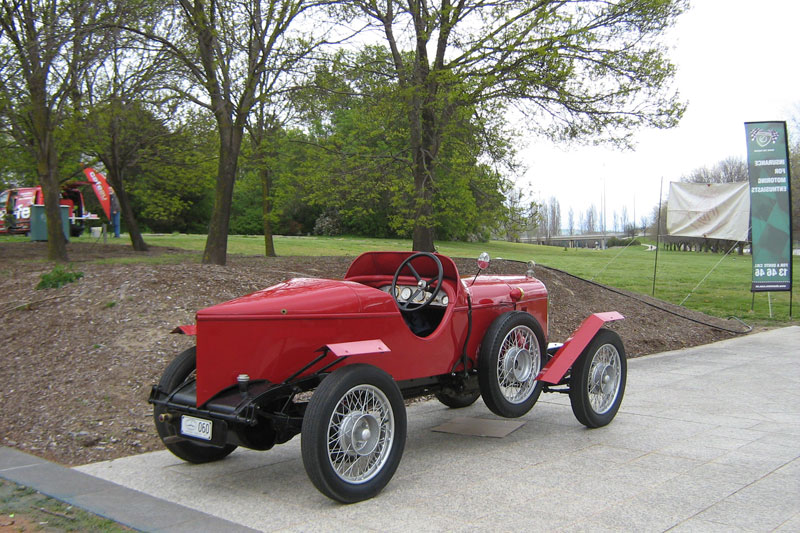 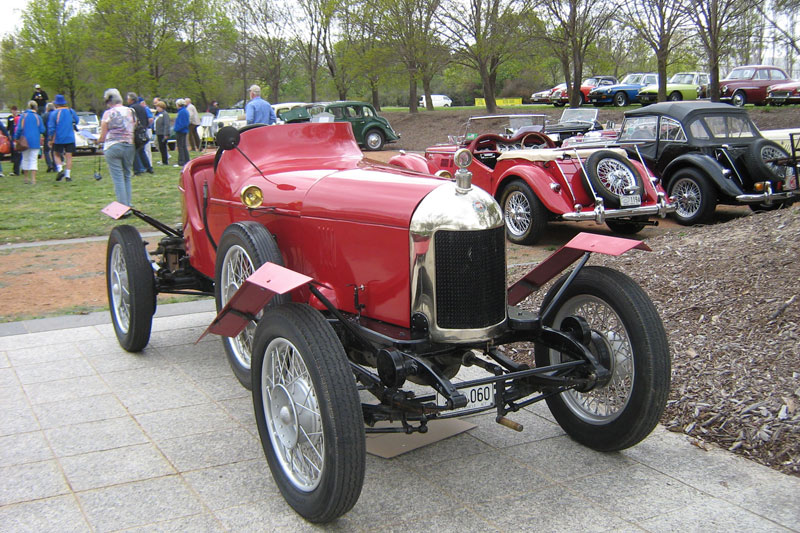 |
||||||||
| Old number one replica | ||||||||
| It has been a busy year MG wise with a new event (the MG Car Club, Canberra, MG TYme Rally, over the October Long Weekend). As I indicated in my last report, several VSCCA cars attended. I did not count numbers but we formed a quadrangle of T and Y types in front the National Portrait Gallery in Canberra on the Saturday. Malcolm R’s SA, a P type and one of two replicas of “Old Number One” in Australia were also displayed, as well as a row of mixed post T Type MGs. | ||||||||
 |
||||||||
| Touring assembly on the way down. | ||||||||
| Two hour long cruises of Lake B G were arranged, and most participants then left their cars and crossed Commonwealth Bridge to visit Floriarde. On either end of the bridge happen to be set, between the roadways, a pair of granite blocks from the old Waterloo Bridge in London which was destroyed by the Germans during WW II. The blocks were distributed to all the Commonwealth countries after the war as mementos. | ||||||||
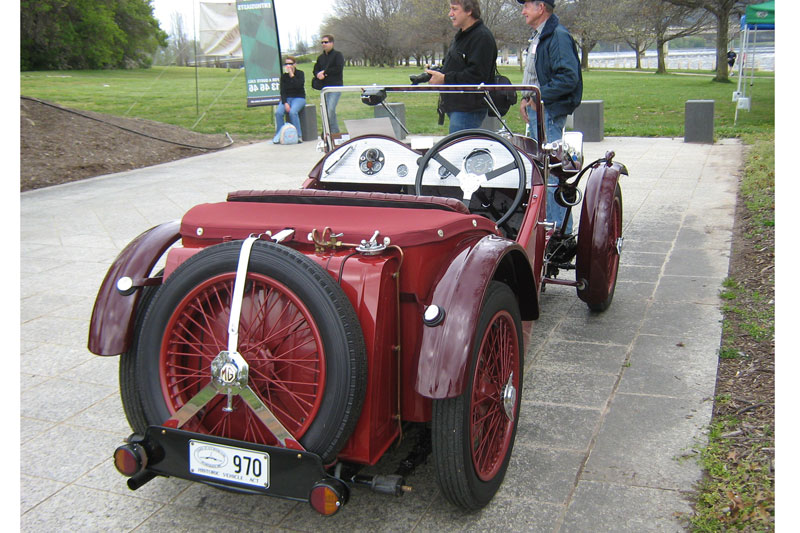 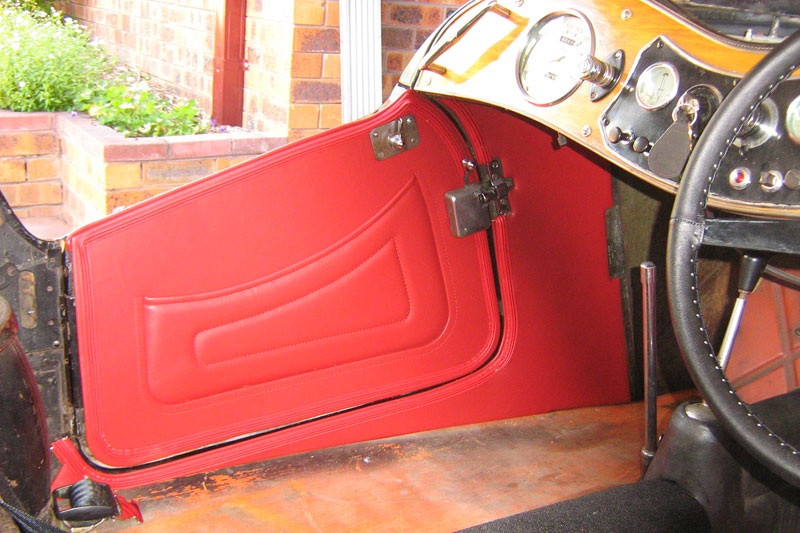 |
||||||||
| P type at Canberra MG TYme Rally TC trim | ||||||||
|
We traveled down in a group of 6 Ts and one Y tourer in a convoy arranged by John H. We traveled along the old Hume Highway and other back roads most of the way – most of us were supplied with each others’ mobile telephone numbers and a most enjoyable passage was made. Our only hiccup was the failure of the dreaded chronometric speedo leaving Goulburn on the return trip. It’s only five years since its last overhaul, and after a short ring around Bruce Smith of Sportsparts ( 9875114 ) took the job on. |
||||||||
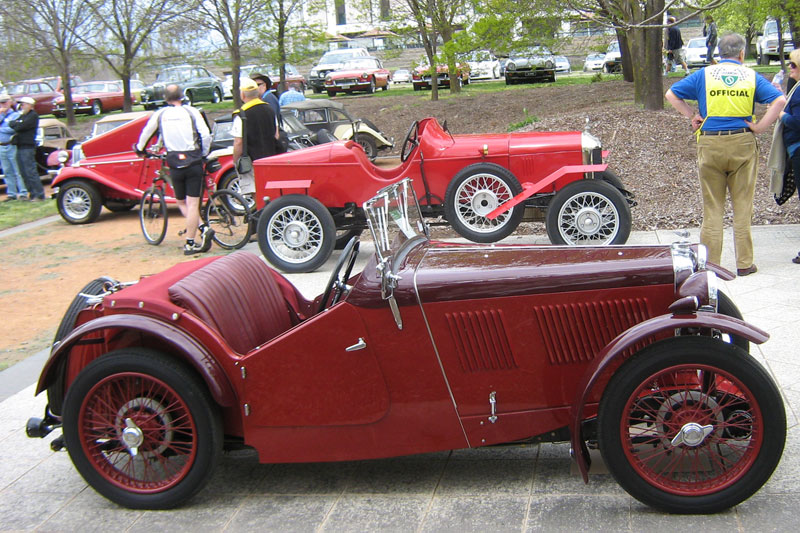 |
||||||||
| P type at Canberra MG TYme Rally | ||||||||
|
Mention was made that the event may well be made biennial, so as to
alternate with the pre war MG Beechworth Run. It was good to see, via the Club’s website, photos of a couple of red MGAs on the George Green Rally. I received a post Rally phone call from Ken Palmer whose Lancia Aurelia GT had lost a windscreen wiper blade in the stormy conditions. Roughly the same size as an MGA’s ! Successful procurement was made at the MG Centre, Granville |
||||||||
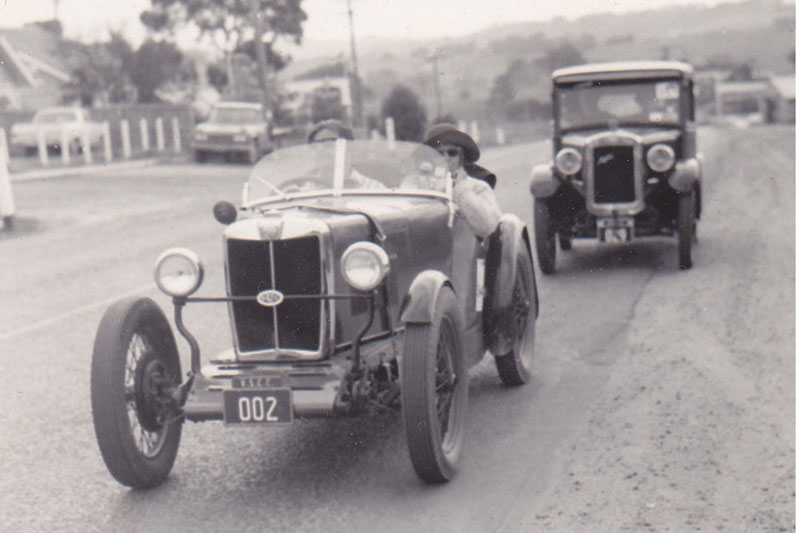 |
||||||||
|
From the archives Ian Senior's M Type 1970
International at Leongatha - Joyce and Glenns' Austin 7 astern. |
||||||||
|
September, October 2010 Report Greetings, Another Eastern Creek CMC display day has passed. Much improved in a number of respects, principally in that, in our (VSCCA) case, being again allotted to section D (behind the grandstand), we had, this time, direct access beside the grandstand to the track for our “track tour”, instead of having to spend half an hour circumnavigating the site to the dummy grid. This had the added advantage of us getting in two complete laps instead of the normal one and a bit. We had four cars on display – Ross McMurray in the 14/40 Vauxhall, Sean Sherry in the MGA, Craig Robinson in the TC and our “M” – type. Ron Button of the Antique and Classic club had his 1927 14/28 MG next to us so I ended up parking the “M” alongside it. It is not often that you can get two pre 1930 MGs together, especially of one each of a midget and the larger two and four seater tourer types. Where were you Julie, to make 3? John Lackey’s TA special was in the concourse, whilst two other Club cars were spotted with one make clubs. The weather was extra kind – mild and sunny and NO WIND! Another advantage of being in section D is that all the general admission people come through your section first. Shortly after we arrived a Chevrolet enthusiast engaged me in conversation and mentioned that a relative of his was attempting to restore an “M” in W. A. He mentioned his name and I said that he had contacted me for body plans. This led to a discussion on the project which is unfortunately all too familiar. The relative has a collection of cammy Morris Minor bits. He made me aware of this when writing. While providing him with what information I had I pointed out that, in fact, there seemed to be fewer Minors around than “M”s, and that as there are many material differences between the two it was a pity to sacrifice a Minor to make a look alike “M”. And, in the process, perhaps deny someone restoring an “M” genuine parts he requires, whilst not taking advantage of sundry Minor parts living under people’s houses which could otherwise get a home. For the record, the basic differences are dimensions (radiator height, bonnet height and width at rear, length of steering column, steering wheel, brake pedal location, pedal shape, brake cross shaft length, cross member lengths, front brake and hand brake actuating mechanisms (early cars), exhaust manifold, rocker box cover, shock absorbers and body. Also, in the “M”, the scuttle mounted fuel tank is fully exposed and not hidden behind the scuttle. The only common parts are basic chassis, motor, gear box, front and rear axles, wheels and prop. shaft. The above was coincidentally born out in an article I read recently on the restoration of a Minor in an Australian Classic Car Magazine whilst waiting for the TC’s door trims to be fitted. Also in one of the magazines an account of the restoration of an ex Gilltrap 1934 Daimler straight eight, which mentioned that the vehicle was fitted with a lever which, when pulled, released oil from the engine bay! Presumably only to be done whilst the car was in motion and then preferably on dusty roads. Also on the restoration front, Craig put me onto a source of T type parts in the USA – an outfit by the name of “From the Frame Up”. Easily located on the internet by this name. I imported a set of carburetor overflow pipes and a carpet kit at a considerable saving over local suppliers. Freight is not over the moon and the parcel was delivered to the door. A trim kit was considered but matching commercially available leather/vinyl pre made kits to existing seats is well nigh impossible. Also, it is impossible to match components such as door linings as these differed in size from door to door! The old adage that a T type body consists of two sheets of tin and a bundle of firewood has an element of truth. Much better in this case to get a local upholsterer such as Blackneedle in Penrith, WWW.blackneedle.com, telephone 4722 5333), who, in our case, matched the existing seat leather (MG red) exactly, made up the door trims, fitted them in superb fashion, and supplied enough material for the rest of the car. The Eastern Creek day was followed by the All British Day at King’s School, where we had an excellent roll up of Gs, including the Waltons’ TC (black with green trim) and a red mark II MGA. Fortunately, similar weather to the Creek. On the subject of display days, don’t forget that the Club has, on its web site, a sheet with the Club logo to print out on which to put details of your car. On the October long a number of VSCCA Gs will be heading to Canberra for the MG TYme Rally (MG Car Club Canberra) – a display at Floriade is included and a cruise on the lake. I rang Phil Dadd a short time ago only to find him laid up in Mt. Wilga with a couple of ailments. We wish him a satisfactory outcome. That just about wraps this Report up, except to mention that, 50 years ago, round yellow signs had appeared in Eddy Avenue, Central, proclaiming that “ Coogee and Botany line trams had been replaced by buses”. The 50th anniversary of the very end of trams in Sydney is being commemorated at the Sydney Tramway Museum late next February. I’ll keep you posted. See you on the road, Ian
|
||||||||
| August 2010 Report | ||||||||
|
Greetings. In recent months the Club has embraced modern technology with an excellent website under the superintendence of Webmaster John Grant. More will have been said, but I encourage all MG members to partake vigorously. This is not just for the Club’s public image but for us all to enjoy the fruits of each other’s labour and passion. One example of this embracement was today’s (20th July) newspapers’ obituaries where the sad passing of Norm Bice was recorded under the Club’s badge in colour. No better tribute to Norm than that he should be the first so announced. No better tribute to the Club that it has the personnel with the ability to effect such matters. Having got to know Norm through Silverdale some 50 years ago I much enjoyed our unfortunately infrequent chats in recent times. This will be something I will miss but will remain a memory to enjoy. On matters currently topical, the introduction of mobile speed camera vans has raised the usual revenue raising versus safety debate. No mention lately has been made of their added ability to instantly recognise the fact that a vehicle is unregistered which has, on trials, resulted in the additional, and not unexpected, discovery of an unlicensed driver with a string of offences. Curiously, on this subject, it is only recently that Craig Robinson’s father gave me a copy an article entitled “THE PUBLIC AND THE MOTOR CAR” which appeared in the January, 1909, “Quartlerly Review, London” which was highly critical of unnecessary speed limits and of the constabulary (police ambuscades) laying speed traps for the purpose of raising revenue instead of more openly promoting safety. This was when speed limits were unrealistically low (20 MPH) and the feeling was that the Act was passed by a Parliament knowing next to nothing of “the dirigible quality of motor cars”. The article also promoted the need for motorists to be protected from not being able to receive impartial justice from some benches of magistrates. “Harassed by police ambuscades, many of them of the money seeking kind, a body of motorists, a small body at the outset, conceived the sublimely impudent idea that they might retaliate upon the law and upon the police by sending out scouts to locate and discover police ambuscades. They went further , indeed, than to conceive the plan. They carried it into effect over a great many of the high-roads of the country, and, aided by some of the automobile journals, did their audacious work most efficiently. The small body becoming larger, it assumed the title of Automobile Association”. The article went on to mention that the authorities should reason out and discover the right way to deal with “motorists and the motor-car traffic in this singularly congested and motor-infested country”. Before dealing at length the “evils to be met”, the article concluded that “the preliminary postulate is that, so long as the dangers and discomforts rising from motor-cars can be reduced to tolerable dimensions, it would be wrong to stunt a growing industry and to cripple a method of locomotion, capable of being useful and delightful, by prohibitive taxation of motor-cars or by irritating and unnecessary restrictions upon their users”! There is nothing new under the sun, so they say. At the last Blue Mountains breakky run John Lackey coaxed the TC into action. He explained after the meal that the car was in semi retirement after a vigorous competition life. The story of the genesis of the body and cycle guards was most interesting – also on an earlier occasion of how a handful of bods under Rob Rowe’s leadership changed the head gasket of the TA special at Phillip Island in smart fashion using a card table for a bench We breakfasted at the Coffee Club which is on the eastern banks of the Nepean River in Regentville. After post breakky. stroll upstream along the bank Susan and I motored south under the expressway to Tench Reserve and discovered on our way back to Mulgoa Road via Factory Road a group of very historic residences which will be worthy of further investigation. On thumbing through a compilation by R. M. Clark of reports of MGs from 1929 to 1934 (drawn from The Motor and The Autocar) which I must have acquired early in my MG endeavors, I noticed an interesting commentary on the support the factory received in campaigning the 100 MPH Midget (otherwise known as EX 120). “Among the many accessories and parts which contributed to the success of the M. G. Midget the following may be mentioned:- Dunlop tyres, Terry springs, Hardy Spicer joints, Berry’s road springs, Jaeger instruments, Champion sparking plugs, Castrol oil, Tecalemit oil filter, Superflex tubing and pistons by Brooklands Engineering Co. The owner of the car is Mr. J. A. Palmes, of Messrs. Jarvis, the Wimbledon coachbuilders. M. G. Motors, Ltd., are represented in London by University Motors, Ltd.” By way of an aside, I was down at my good friend Len Darcy’s recently while he cut up a superfluous barbecue grate so I could make two sets of fire grates for my 5” gauge (1.5” to the foot scale) Tasmanian “Q” class steam locomotive. Len was using a sheet metal saw. Half way through the job I casually asked him how he was hacking it. The droll reply was, “I’m actually coping quite well”. In closing, I welcome the e-mails and telephone calls from "MGers" in the Club regarding matters which they are having to address. This is what the Register and the Club is all about. Looking forward to seeing you on the road, Ian
|
||||||||
| June 2010 Report | ||||||||
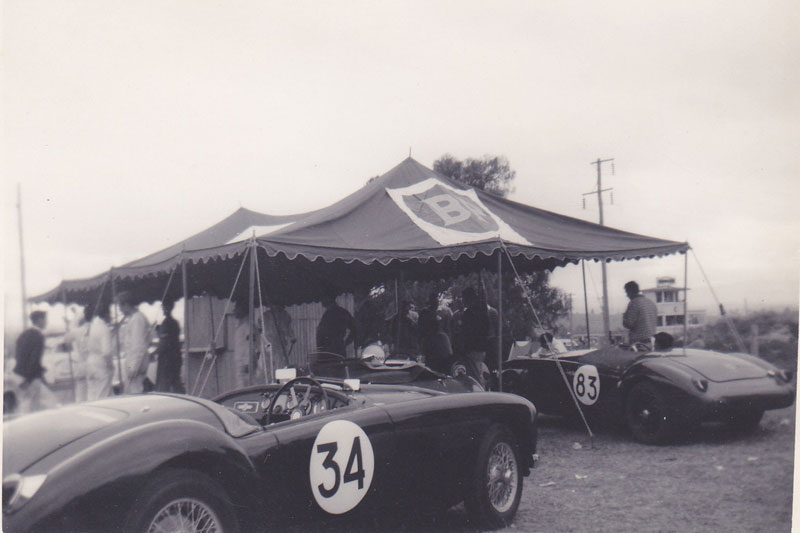 |
||||||||
|
Two newish MGAs + an Austin Healey in
the scrutineering bay at Bathurst 100 50 years ago. |
||||||||
|
News Form China
A bit of news from China. that they are building MGs the Chinese want MG to stand for “Modern Gentleman”, and the new MG sedan is virtually the Rover sedan they finished building in the U. K. with MG badging. Fortunately, with woodgrain dash and all. Indeed, the badge on the steering wheel boss is a combination of the word Rover over the traditional MG badge.
I have recently started to re read Ulyett’s “The MG Companion” which I gave Dad in 1966. Funny how things spring out to make what we modern mortals find bemusing logical. During WW1, Morris and Kimber went to the U S A to the Continental Engine Works and ordered 1,500 engines for Morris Cars, the local product being unsatisfactory. 500 of these engines were said to been lost to U Boats. After the war Hotchkiss were detailed to produce engines of the same design but used metric tooling. It so happens that the very chap who was the thorn in MGs side in the mid thirties (allegedly doing away with OHC engines and MG factory racing) and early 50s (delaying the introduction of the MGA on account of the Austin Healey) sprang to the rescue in the early instance and suggested that Morris simply get Hotchkiss’s to make their metric threaded nuts and bolts to fit Whitworth spanners. This fellow’s name was Leonard Lord! no wonder we had fun rebuilding the Cowley gearbox.
Alan Baker tells me that the reverse was the case when Fiats started making British cars. British tooling and metric spanners. Something of interest to fitters and machinists on the telly recently was a programme detailing the expertise of one John Wilkinson of the Iron Bridge, Shropshire, fame. Being able to produce iron in copious quantities from nearby sources of water and raw materials, he also had the capacity to invent methods of putting his products to use.He came to James Watt’s rescue by inventing the method of boring cylinders using a boring bar. Without this the development of the steam locomotive and effective steam engines and pumps would have been seriously delayed. And accurate projectile weaponry.
VSCCA Events On the events front, the Club has had a couple of good weekend runs lately Bathurst / Hill End & Bellawongarra /Bowral.
On the MG side it was good to see Royce and Julie out in Royce’s MGA on the former – also the Hicklings in the ’38 SA resplendent with its Nile Tour regalia. As we speak it, and the ’37 SA of Rhys Timms, should be on the way over for another Peking to Paris. Other MGers attending were the Baxters, Hollidays, Phil Dadd, and Margaret and Tim.
The Citigate Hotel in Bathurst was just magnificent, right on the bottom part of Conrod Straight overlooking the An added bonus on the Sunday morning was watching a hillclimb in progress starting up Mountain Straight to Skyline, instead of the previously accepted practice of starting at the Light Car Club and proceeding to Macphillamy Park via Forrest Elbow.
Hill End was magnificent in its unspoiled preserved atmosphere. All that was missing was the “orchestra” of sounds which would have accompanied the “roaring days”.
Many of the buildings are gone but thanks to Merlin’s photographic genius (and the fortuitous last minute saving from the tip in the 1950s of his glass plate negatives) nearly every vacant block has a photo and a description of the building which was once there.
The Bellawongarra lunch held at Tony Stachan’s Spanish style house was exceptional. Lunch was catered for most adequately by Table Talk Café of Berry, and there was a splendid line up of vintage and post vintage vehicles thoughtfully segregated, the vintage vehicles near to the house and the post vintage ones in a long line along a nearby ridge.
John Phillips and Richard Calver were up from Canberra and the day before had linked up with Alan Baker at the HARS Museum at Albion Park aerodrome.
Some of us overnighted at the Pioneer Motel in Kangaroo Valley. An excellent and well appointed establishment. On Sunday it was off to Chevalier College at Bowral for a National Motoring Heritage Day gathering. Reg Wade brought the Dodge and Annette materialised later as they were down as marshals for the afternoon. Good to see yet another batch of interesting vehicles with nice a line up of Daimlers including a brace of SP250s.
During the run home we detoured via the Mittagong - Picton loop line and came across steam loco. 3526 dressed up as a Thomas the Tank character with its train of end platform carriages at Buxton. Inevitably we waited for departure and then drove past the Rail Transport Museum’s Thirlmere complex which is rapidly being transformed into a world class museum, good to see after nearly forty years in the doldrums, even if the exercise is at the expense of the State Government getting everything heritage wise out of Sydney and severely culling what they call Core Heritage Items.
The place was packed out for their Thomas day and there was a Sydney Leyland OPD2 double decker filling in as “Bertie the ‘bus”, face and all!
We arrived home well satisfied, the MGA having consumed half a tank of fuel giving a rate of consumption of 44mpg (or 6.5 litres per 100 kms in the new money).
A bit of trivia with which to finish up. I once purchased from Ron Ferguson for the Cowley one of those red triangles which proclaimed that the vehicle had four wheel brakes. I was recently reading a book entitled Tramway Memories which included a chapter on London’s tramways, and an account of the modernization period of the London United Tramways and in particular car 261 which was spotted resplendent with aprons painted in a manner to attract motorists’ attention to the superior accelerating and stopping qualities of the tram, and to be one up on the four wheel braked motorists, the tram had a triangle proclaiming that was fitted with EIGHT WHEEL BRAKES!
Cheers,
Ian
|
||||||||
|
|
||||||||
|
||||||||
> VSCCA Home <